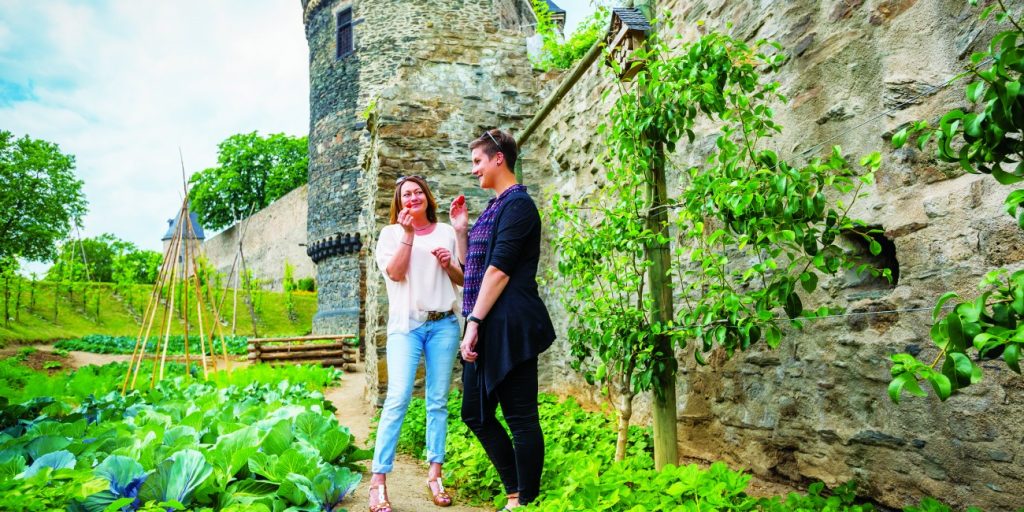
Edible city of Andernach, Germany
Andernach city has developed it’s public green spaces as vegetable and fruit patches for all to freely pick, contribute to and enjoy. The city’s intentions are multifunctional – they hope that by transforming public spaces into food producing public areas that they enhance the biodiversity, ecology, economy and attraction to the city as well as the wellbeing of the residents. They want the city to be a multi-sensory experience. They have won a gold medal in the Entente Florale international competition which impresses ‘the importance of the green environment to the quality of living in participating communities, in residential, urban and industrial areas’.

Residents are encouraged to participate in the planting, tending to and harvesting of the crops. (Source: Urban Green Blue Grids, 2022)
Each year a different type of plant is featured within the castle garden, within the city centre. In 2010 it was tomatoes, 2011 was beans, 2012 onions and 2013 was cabbages. Each year the featured plant will have tens of varieties planted with the aim to promote forgotten fruit and vegetables, and to highlight useful crops. The suburb of Eich has established a 14 hectare permaculture garden which does not use pesticides and only uses mineral fertilisers. When the produce in the city centre’s gardens is used there is still sure to be plenty available from the Eich district. This ensures residents always have access to fresh produce.

The Eich district is home to a 14 hectare permaculture garden. (Source: Daniel Stanke, 2022)
Part of the program in Andernach is that citizens can get involved with the planting and tending to the crops. This educates residents in fruit and vegetable seasonality and in horticultural practises. The city’s ‘picking allowed’ policy means that fresh and healthy food is made available to everyone. Although the public spaces are not connected, as they would be with the CPUL concept, the conversion of open green spaces to productive green spaces throughout the city certainly reflects strongly elements from the CPUL concept. This project highlights how beneficial creating and converting spaces within cities for food production can be for the ecology, economy and community.

Andernach believes that the food productive spaces enhance the city’s aesthetic. (Source: Urban Green Blue Grids, 2022)
For further information see the project’s own website.
https://www.andernach.de/stadt/essbare-stadt/
For information on the Entente Florale competition see here.
http://www.entente-florale.eu/
Back to previous page related design projects.
